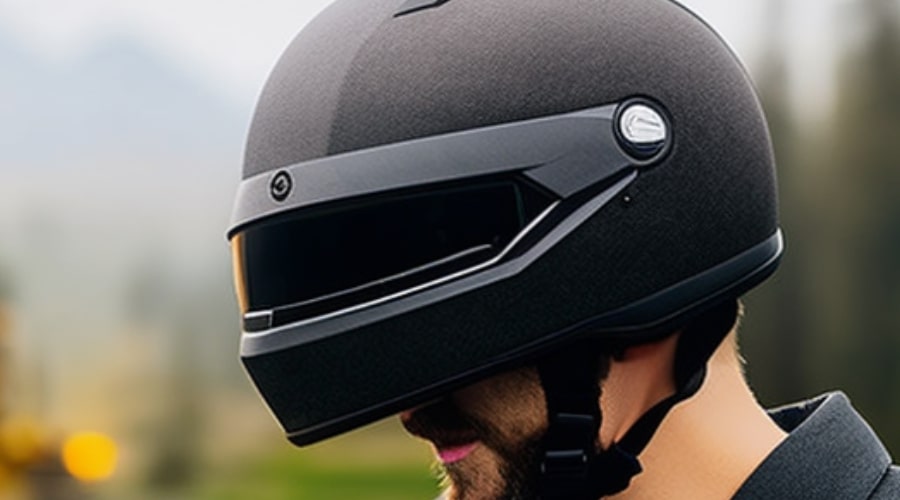When it comes to protecting your head from bullets, not all helmets are created equal. While helmets have been used for decades to protect against injury and trauma, the advent of bulletproof helmets has revolutionized the world of personal protection.
In this article, we will explore the different types of bulletproof helmets available, their level of protection, and how to choose the right one for your needs.
The Importance of Choosing the Right Helmet
- The Evolution of Helmets
- Why a Bulletproof Helmet is Necessary
- Understanding the Different Levels of Protection
Types of Bulletproof Helmets
- Ballistic Helmets
- Tactical Helmets
- Riot Helmets
- Combat Helmets
- Special Operations Helmets
1. Ballistic Helmets:
Ballistic helmets are designed to protect against bullets of varying calibers and velocities. They are made of materials like Kevlar, which is strong and lightweight and offers varying levels of protection based on their ability to withstand bullets of different types and velocities. Law enforcement officers, military personnel, and others who may face ballistic threats use helmets.
- Tactical Helmets:
Tactical helmets are designed for use in high-risk situations that require a high degree of protection. They are made of materials like carbon fiber, which provides strength and durability while keeping the helmet lightweight. Tactical helmets often feature additional accessories like night vision goggles, communication systems, and protective visors to enhance their functionality.
- Riot Helmets:
Riot helmets are designed to protect against blunt force trauma and projectiles like rocks, bricks, and bottles. They feature a face shield made of polycarbonate, which is impact-resistant and provides clear vision. Riot helmets are commonly used by law enforcement officers during riot control situations.
- Combat Helmets:
Combat helmets are designed for use in combat situations and protect against ballistic threats, fragments, and blunt force trauma. They are made of materials like aramid fiber and offer high protection while remaining lightweight and comfortable to wear. Combat helmets are used by military personnel and other individuals who may face combat situations.
- Special Operations Helmets:
Special operations helmets are designed for use by elite military units like special forces and navy seals. They protect against ballistic threats and offer additional features like communication systems, night vision goggles, and helmet-mounted cameras. Special operations helmets are made of lightweight and durable materials like carbon fiber to minimize weight and maximize protection.
Understanding Ballistic Protection Levels

Ballistic protection levels refer to the degree of protection offered by a helmet against bullets of different calibers and velocities. The National Institute of Justice (NIJ) has established standards for ballistic helmets based on their ability to withstand bullets of varying types and velocities. Helmets are tested for their resistance to penetration, backface deformation, and their ability to stop secondary fragments.
Helmets are also rated for their resistance to stabbing and blunt trauma. Understanding these levels of protection is essential when choosing a helmet that offers the right level of protection for your needs.
How to Choose the Right Bulletproof Helmet
- Consider Your Environment
- Assess Your Needs
- Understand the Risks
- Choose the Right Materials
- Consider the Price
Care and Maintenance of Bulletproof Helmets
- Cleaning
- Inspection
- Storage
FAQ
What is a bulletproof helmet made of?
Bulletproof helmets are typically made from composite materials such as Kevlar, Dyneema, and high-density plastic. The materials used vary depending on the level of protection required.
Can a bulletproof helmet stop any bullet?
No helmet can stop every type of bullet. The level of protection offered by a helmet depends on the materials used and the ballistic protection level.
Can a bulletproof helmet prevent brain injuries?
While a bulletproof helmet can protect the head from penetration by a bullet, it does not necessarily prevent brain injuries. The force of impact can still cause trauma and injury to the brain.
How often should I replace my bulletproof helmet?
The lifespan of a bulletproof helmet varies depending on the materials used and the level of wear and tear. You should replace your helmet every five years or after any significant impact.
How do I know if my bulletproof helmet fits correctly?
A properly fitting helmet should sit snugly on the head without any gaps between the helmet and the head. It should not be too tight, which can cause discomfort and impede circulation. You should try on several different helmets to find the best fit.
Conclusion
When it comes to personal protection, choosing the right helmet can mean the difference between life and death. Bulletproof helmets are the ultimate form of protection against firearm injuries, and understanding their different types and levels of protection is crucial. By following the tips outlined in this guide, you can ensure that you choose the right helmet for your needs and protect yourself against potential harm.
If you are still unsure about which helmet to choose, contact a professional in the field of personal protection for expert guidance.
Helmetslab is a website that focuses on providing in-depth reviews and information about different types of helmets, including motorcycle helmets and others helmets. I am writing a post with proper research on the info that helps helmet users.

